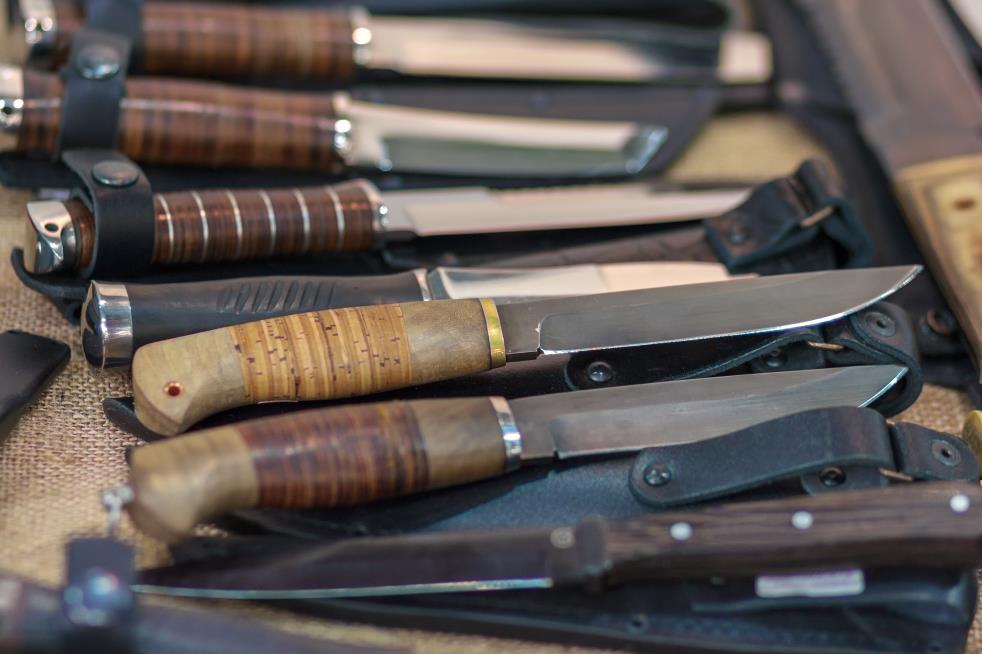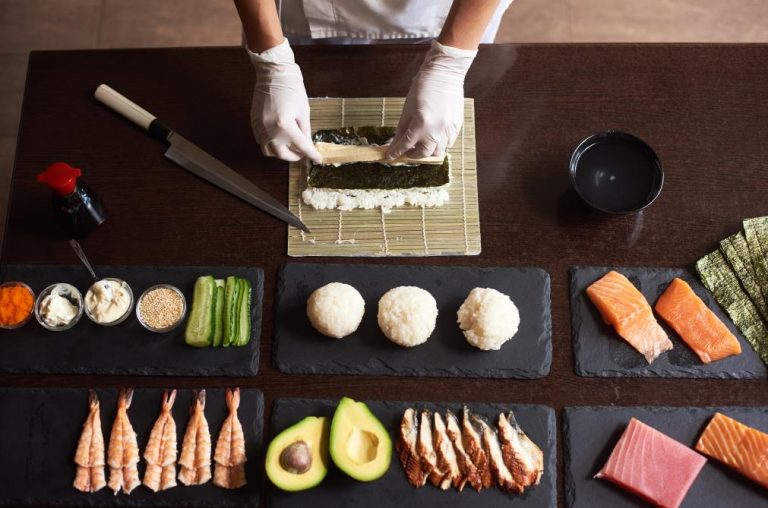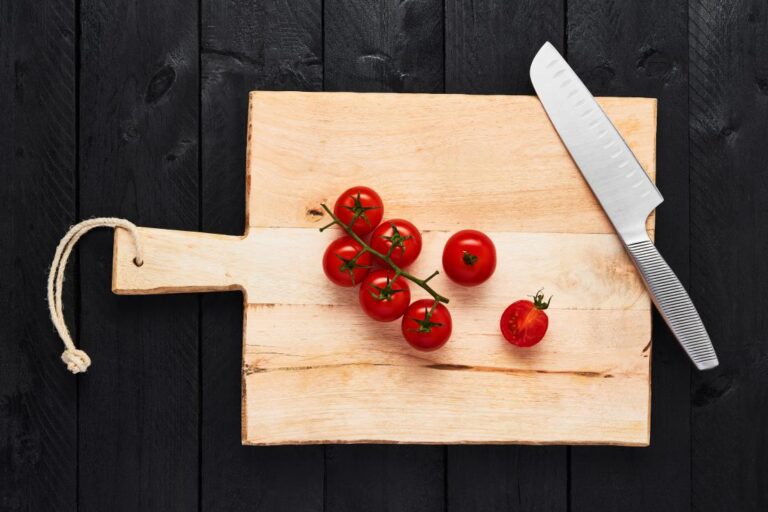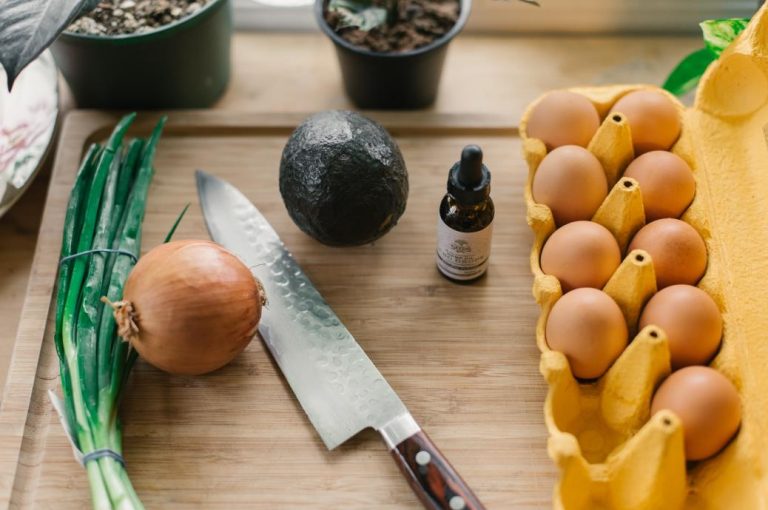A knife consists of a many components. The most obvious two are the blade and the handle. While the blade’s performance often overshadows the handle, but it is just as important.
An incredible knife is the combination of both components. If it doesn’t have a comfortable handle to hold, the cook won’t be able to operate with it confidently, and wrist pain will settle in shortly after. That’s why a kitchen knife, or any other, should have a comfortable handle the user can hold to operate the blade efficiently.
While they are vital, there isn’t a best kitchen knife handle. All cooks have preferences that influence their priorities. That’s why kitchen knives come with different types of handles. This article will go over just that – covering various kitchen knife handle materials, shapes, and more.
How does the handle affect knife performance?
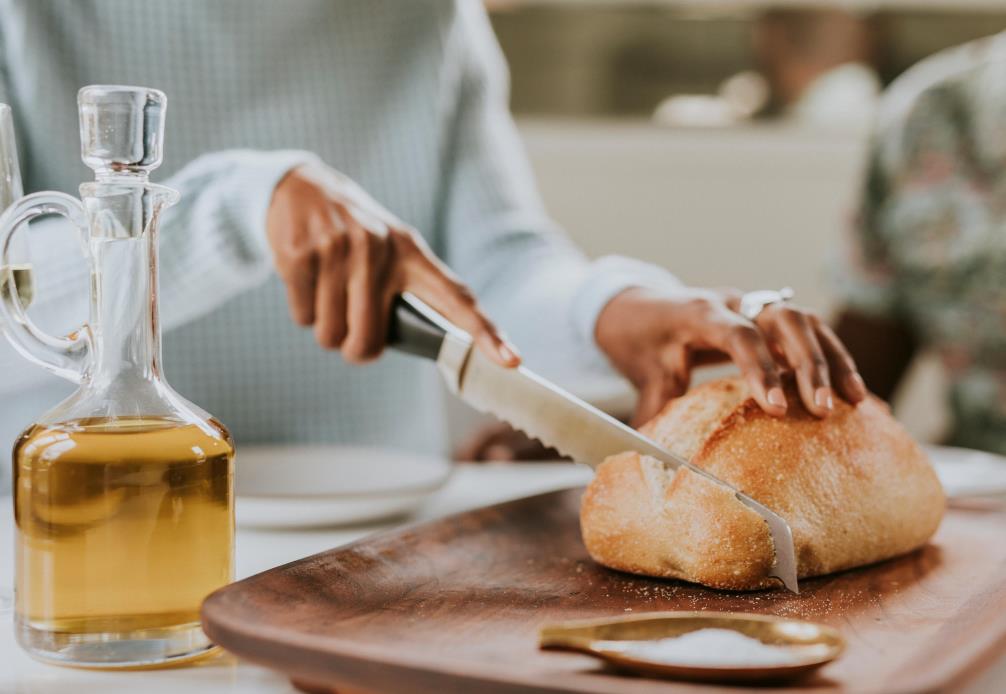
As mentioned above, even the sharpest blade needs to have a handle appropriate for the user.
Although this goes for every knife, it’s critical to point out that a home cook will view handles differently than a professional chef. It’s typical for a home cook not to notice the importance of the handle as they don’t use their knives as much. When you’re cutting foods for hours on end every day, the importance of the handle becomes much more clear.
It isn’t just the comfort the handle provides. The handle also affects the knife’s overall balance. The knife will balance towards the handle or the blade, depending on which one is heavier.
For example, Japanese kitchen knives have a slim handle with less tang material. The reduced weight on the handle compared to its western counterparts gives Japanese kitchen knives a slightly forward leaning balance.
Overall, the handle material primarily influences the following in knives.
- Price
- Balance
- Aesthetics
- Comfort
- Grip
- Required maintenance
- Durability
Here is a rundown of what to expect from different knife handle materials, their variations, and the pros and cons of each.
Different types of handle material
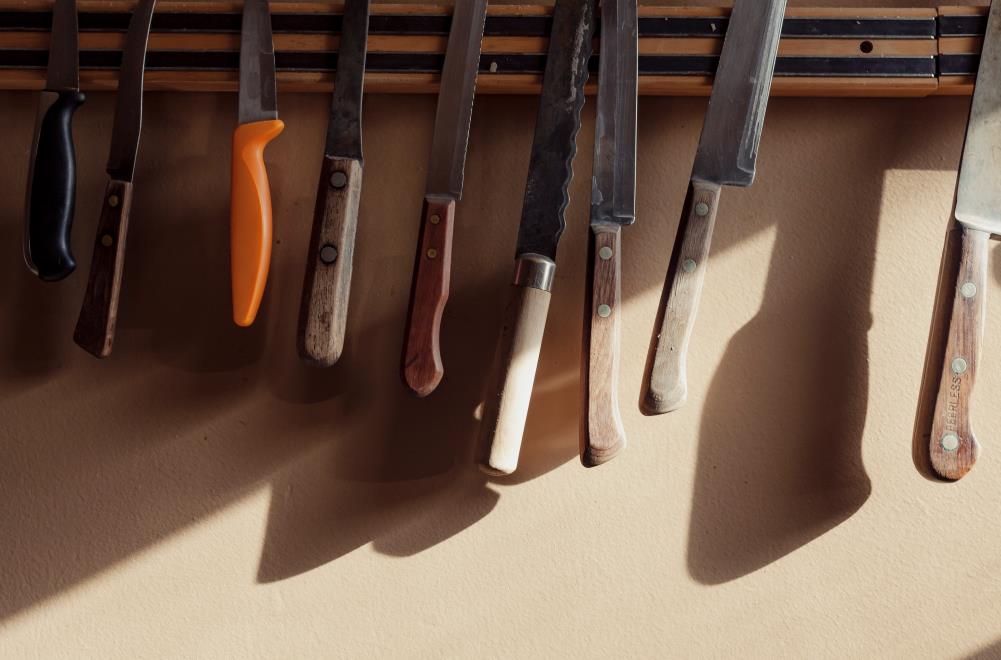
Every knife enthusiast regards natural knife handle materials like wood and composite variations for durability, looks, and comfort. Most high-end kitchen knives come with wooden handles equipped, providing great balance and aesthetics.
In addition to the natural attributes of wood, they fit every budget. Wooden knife handles come in a wide range of prices. It’s typical for someone looking for a new kitchen knife to find blades furnished with wooden handles from $10 to $100.
Not all knife handle materials are natural. There is an abundance of synthetic materials used as a knife handle, like plastic and metal. These knife handles are often more sanitary than their natural counterparts. They don’t absorb moisture as wood or composite does, ensuring a smooth surface bacteria can’t hide.
Natural knife handle materials
Wood
Wood is the go-to natural knife handle material, but there isn’t a single type of wood, and not all are suitable for kitchen use. The ideal wood for a knife handle needs to be tough, durable, and naturally resist moisture.
Hardwood with tiny pores that water and moisture can’t hide is an excellent material for making knife handles. Like the wooden cutting boards, these handles demand more upkeep. Nonetheless, wood knife handles can last as long as the blade in exchange for the additional effort.
Buy Wholesale Knives and Start Scaling up with Us Today
Contact us and connect with a sales rep to get a free quote.
Types of wood
Here is a list of popular types of wood as a knife handle material.
- Oak: The staple for knife handles, oak wood has fine grains and is easy to carve. They are tough, durable, and surprisingly affordable as oak is used widely.
- Walnut: Dense, heavy, and long-lasting. These are just a few words to describe walnut. It’s a robust wood that provides knives with a sturdy handle.
- Olive wood: The natural light-yellow color with dark brown stripes running through, olive wood offers more aesthetics. Still, with regular upkeep, olive wood can withstand regular use.
- Ebony: One of the densest woods, ebony gives knives a dark finish that ensures durability. Ebony wood is mainly found in the handles of custom knives because of its high price.
- Rosewood: Like ebony, rosewood is darker in color and just as durable. Rosewood provides a great price to performance ratio considering its durability, toughness, and ability to resist pests.
- Cocobolo: Thanks to the high natural oil content, cocobolo wood repels water better than others. It’s the perfect wood choice for those who frequently get their blades wet.
- Cherry: One of those woods that maintain their looks even under extreme conditions, it’s no wonder why cherry wood is a favorite among knife lovers.
These are undoubtedly common types of wood utilized for making knife handles, but others like bocote, bloodwood, amboyna, koa, and many more are just as prevalent. As long as the timber is tough and resilient to moisture, it’s perfect for making knife handles.
Pros
- Highly durable
- It comes in a wide range of price points
- Plenty of options
Cons
- It requires more upkeep from the user
Bamboo

Everything bamboo has gained traction over the last couple of years. Bamboo is just as durable and sustainable as wood. Furthermore, it’s even better at repelling water than wood. These handles can offer similar durability to people that typically use their knives around water.
Because repelling water is bamboo’s main highlight as a knife blade material, they are more prominent in outdoor knives than kitchen knives. Still, the same texture and comfortable grip make bamboo knife handles a strong alternative to wood. They have a similar texture and aesthetics to wood with their growth rings, but they don’t have the same variety of colors and patterns.
Pros
- Repels water excellently
- Affordable
Cons
- Not as durable as wood
- Susceptible to scratches and other damage
Composite
Even though not all composite is natural, those made from wood and other natural materials, often resin, are cost-effective for making knife handles. They aren’t as sturdy as hardwood, and overlooking upkeep can result in cracks.
Composite is often criticized for giving a wooden look without the qualities that make it ideal for making knife handles. While this can be true for a professional chef, composite handles satisfy most home cooks. Just as wooden knife handles can last long in a fast-paced kitchen environment, a composite knife handle made from natural materials will be fine in most homes.
One highly favored feature of wood composite handles is the variety of designs. Wood composite handles offer one of the most diverse appearances for knife handles, from natural wood looks to gemstone to plenty of others.
Pros
- Comfortable to hold but can get slippery
- Affordable
Cons
- Not as balanced
- Susceptible to cracks
Pearl and abalone
The process behind making pearl handles is different from others on this list. These knife handle scales are made from nacre, also known as the mother of pearl. It’s the inner coating of the shells that have a glossy look. These knife handles are more popular with custom knives and are rare due to their high price.
On the other hand, abalone is pretty much identical to pearl handles. The main difference is abalone knife handle scales are made from mollusks, making them a lot more affordable. Both knife handle materials are the same other than the cost.
Pros
- Gorgeous looks
Cons
- Expensive
- Not as durable, cracks and chips can happen easily
Synthetic knife handle materials
Metal

The metal knife handles are the most unique in this list. Some metal knife handles are made from the same steel as the blade. Instead of a tang, the metal handles are a part of the blade.
The same as the blade, they are ground and polished. The result is a knife entirely made from a single piece of steel. These knife handles are prominent with brands like Global Knives.
There are also metal composite knife handles. Since composite can’t be forged with the blade, these metal-mix knife handles are the same as any. Regardless of their variation, metal knife handles are incredibly sanitary and durable but tend to have an off-balance and slippery grip.
Pros
- As durable as the blade
- Unique look
- Often expensive
Cons
- Usually heavy
- Poor balance
Plastic
Like any other product, plastic found its place in kitchen knife handles. Most kitchen knives that have better options come with plastic handles. These handles are affordable and easy to manufacture.
Equipping blades with plastic handles is often the first thing that comes to mind when knife manufacturers need to cut costs. Even though cheap, plastic has some good attributes to it.
Plastic is a knife handle material that provides a firm grip like wood handles. They are also very hygienic as plastic doesn’t have any pores bacteria can dig in. However, they won’t satisfy most cooks from a durability and aesthetics perspective. When a knife handle needs to be practical and affordable, plastic handles are often the best option. That’s why these knife handles are more common commercially.
Pros
- Inexpensive
- Sanitary
Cons
- It doesn’t look as good
Comparing different knife handle materials
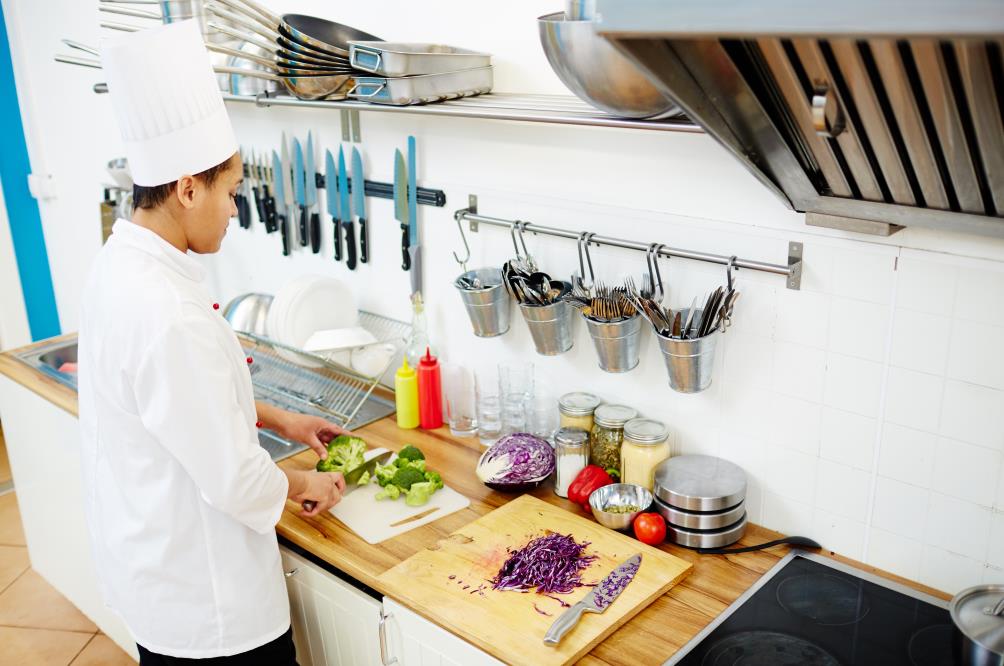
We’ve gone over the typical knife handle materials found in kitchen cutlery. Here is how this different knife handle materials compare across areas where they impact the users.
Price
Settling on the appropriate handle for the blades you anticipate selling is vital. For example, wood won’t be the ideal pick if you plan to sell budget paring knives. Instead, plastic or bamboo will be a better-suited choice.
Among the knife handle materials listed in this article, wood and pearl are the costliest, with wood offering the greatest variety and performance. Even though pearl knife handles are expensive, they don’t provide the same functions as wood handles do. They are more for custom knives that the buyer wants something specific.
Natural wood or composite will satisfy most customers if you want your knife handles to have the best attributes within an optimal price range. Metal is also a viable option, but how it’s assembled to the blade matters.
Some metal handles are forged with the blade, making them labor-intensive, thus, driving the price higher. Others are like any other handle, but then metal handles beg the question of the balance due to weight.
Balance
Wood knife handles can be heavy or lightweight, depending on density. For example, ebony is heavier than redwood because it’s significantly denser. Comparing ebony and redwood are on the opposite end of the spectrum in weight. There are many wood choices in between, providing an even balance or towards either the handle or the blade.
Balance is fair with plastic or other synthetic materials, like composite. Just as wood handles, plastic and synthetic materials have different densities, affecting weight and balance. These can’t be said for metal handles, and it’s not common to see evenly balanced knives equipped with metal handles.
Additionally, bamboo is lightweight, enabling forward-balanced blades, while pearl and abalone are heavier.
Aesthetics
The natural beauty of wood and bamboo is highly sought-after as knife handle materials. In addition to all the features they provide, wood and bamboo knife handles are just as gorgeous. Wood knife handles come in plenty of shades and patterns, making them highly versatile visually. Bamboo has a plain and mostly yellowish-brown look.
Much of these also apply to composite wood handles, where manufacturers can alter the wood’s natural color to fulfill the liking of the customers.
Pearl and abalone are the most impressive with their distinct color schemes. The same can’t be said for plastic and metal handles. Although metal handles give the knife a unique look, they are simple and basic, like plastic.
Any natural knife handle material leaves artificial options behind, with wood offering the most combinations.
Grip and comfort
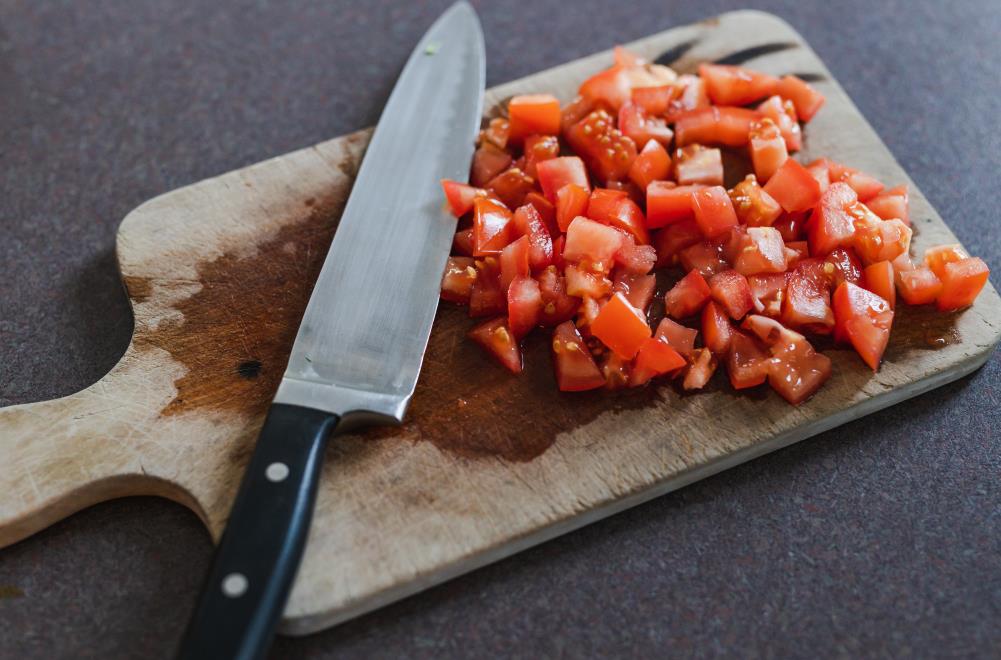
A knife handle should provide its user with a firm, comfortable grip, allowing them to use the blade efficiently and confidently. However, it isn’t just the material that affects this. The shape and the size are just as important factors.
The knife handle materials influence the grip, comfort, and how long it can sustain this over long hours. Composite and wood are the most comfortable knife handle materials on this list. There are also somewhat soft plastics that provide a similar grip, but they often fall behind.
Despite their unique look, metal handles usually get slippery and let down their users. Excess weight is also a big contributor to this. Metal knife handles can put stress on the wrist after a brief period of slicing and chopping because of the weight.
Wood and plastic are the best choices for knives that need a firm and comfortable grip. Pearl and abalone knife handles often fall somewhere between composite and plastic.
Maintenance and durability
This part doesn’t concern average users as much as a professional, but regularly upkeeping the handle will make it more durable regardless of the material. Some just require more upkeep than others.
Wood handles need more looking after than others. Yet, these are very simple, demanding minimal effort and time. Oiling the handle with food-grade mineral oil every now and then will ensure it doesn’t suck in moisture. These also apply to bamboo knife handles.
Setting a kitchen equipment care routine to oil wooden cutting boards and knife handles will take less than 10 minutes. As compensation, they will always perform at their best. These care needs are relatively the same with composite handles, but they require a more frequent routine.
The rest is relatively low maintenance, but upkeeping should still be an essential part of the routine.
| Wood | Bamboo | Composite | Metal | Plastic | |
| Price | Depends – affordable to expensive | More affordable than wood | Generally affordable | Mostly expensive | Most affordable |
| Balance | Perfect balance | Fair balance | Fair balance | Often heavy, off-balanced | Fair balance |
| Aesthetics | Multiple options | Mostly plain | Multiple options | Distinctive | Basic |
| Grip | Firm and comfy | Solid | Comfortable but can get slippery | Slippery | Solid |
| Maintenance and Durability | High maintenance but very durable | Moderate upkeep and durability | Moderate upkeep but durable | Low maintenance and extremely durable | Low maintenance and durable |
Japanese knife handle vs. western knife handle
Japanese kitchen knife handles feature a different shape than their western counterparts. The traditional Japanese knife handle, known as the wa-handle, has a slimmer build that’s lighter. The handle’s build and less metal on the tang promotes a forward balance, giving the cook an easy time when chopping large amounts ingredients.
The materials are also somewhat different. The synthetic materials mentioned above aren’t popular with Japanese knife handles. They are primarily made from either wood or bamboo.
These aren’t to say that all Japanese knives come with the traditional wa-handle. Those who like the features of Japanese blades, such as extreme sharpness, edge retention, and easy sharpening, can benefit from them with a western handle. Many knife brands have Japanese-style blades with both traditional and western handles.
Best knife handle material for chefs
The most suitable knife handle material for most chefs is often wood. Its durability, firm grip, balance, and many options to choose from make wood the best material for professionals.
Plastic is also a good option in commercial kitchens, where sanitization and cost-effectiveness are put forward. Additionally, bamboo is an excellent choice for those who work with fish often.
Best knife handle material for home cooks
Home cooks have the widest preferences. Still, cost, efficiency, and durability are what most home cooks think about before purchasing a knife. The first choice is, of course, wood, but when it is too pricey, wood composite serves as the best alternative.
Plastic is the most affordable, while bamboo, metal, pearl, and abalone are up to the user’s personal preferences.
Conclusion
Wood leads the way in being the best knife handle material for most people. Composite and plastic are the most cost-effective. Bamboo is a more water-resistant but less durable alternative to wood. The others are more for customers that want something specific.
Regardless of the type of handle you want to equip the blades you’re planning to sell, we got you covered. Head over and contact us for retailers and wholesalers. We also provide dropshipping services with free global shipping and warehouses in the US.
